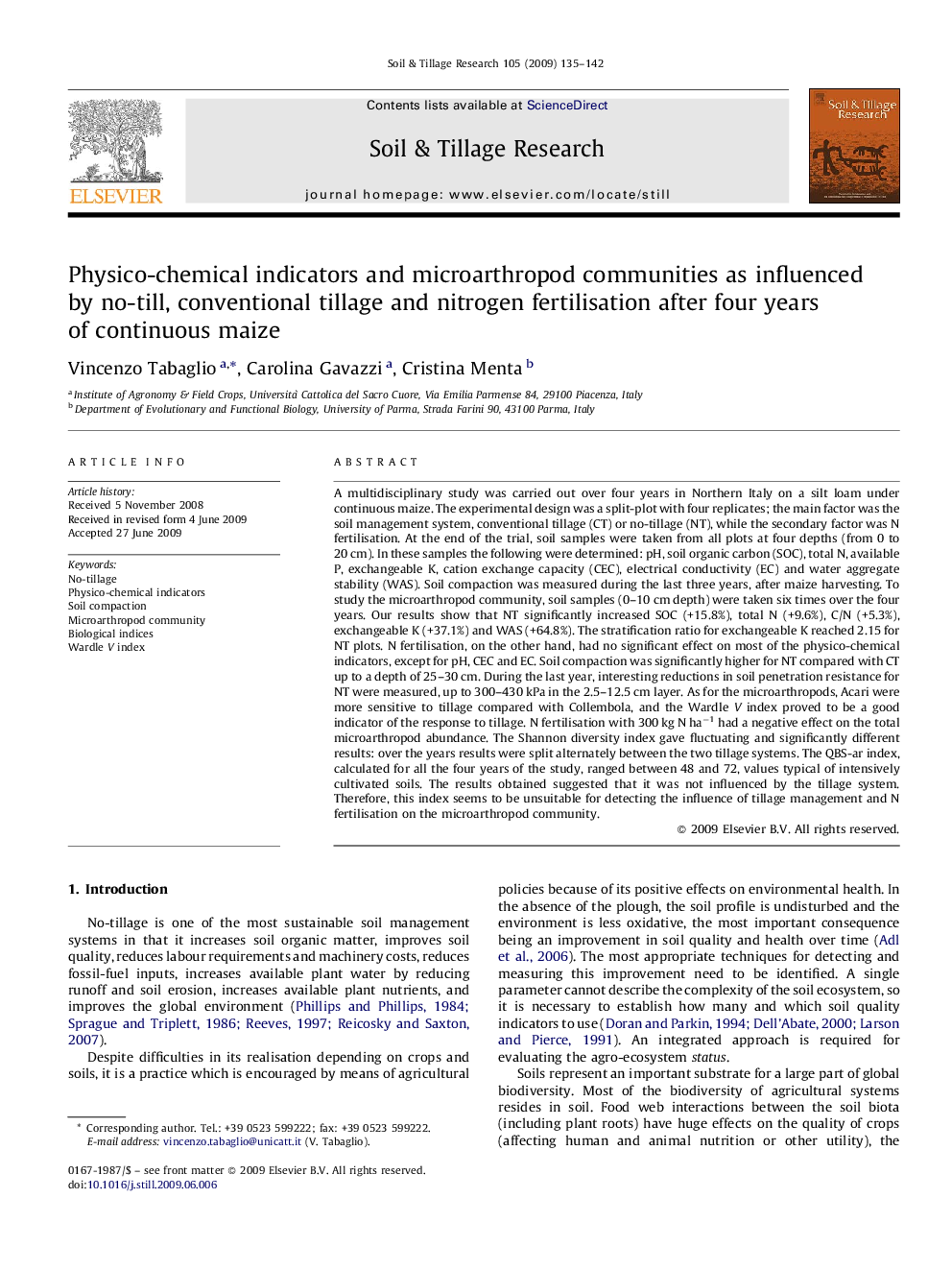| کد مقاله | کد نشریه | سال انتشار | مقاله انگلیسی | نسخه تمام متن |
|---|---|---|---|---|
| 306429 | 513094 | 2009 | 8 صفحه PDF | دانلود رایگان |

A multidisciplinary study was carried out over four years in Northern Italy on a silt loam under continuous maize. The experimental design was a split-plot with four replicates; the main factor was the soil management system, conventional tillage (CT) or no-tillage (NT), while the secondary factor was N fertilisation. At the end of the trial, soil samples were taken from all plots at four depths (from 0 to 20 cm). In these samples the following were determined: pH, soil organic carbon (SOC), total N, available P, exchangeable K, cation exchange capacity (CEC), electrical conductivity (EC) and water aggregate stability (WAS). Soil compaction was measured during the last three years, after maize harvesting. To study the microarthropod community, soil samples (0–10 cm depth) were taken six times over the four years. Our results show that NT significantly increased SOC (+15.8%), total N (+9.6%), C/N (+5.3%), exchangeable K (+37.1%) and WAS (+64.8%). The stratification ratio for exchangeable K reached 2.15 for NT plots. N fertilisation, on the other hand, had no significant effect on most of the physico-chemical indicators, except for pH, CEC and EC. Soil compaction was significantly higher for NT compared with CT up to a depth of 25–30 cm. During the last year, interesting reductions in soil penetration resistance for NT were measured, up to 300–430 kPa in the 2.5–12.5 cm layer. As for the microarthropods, Acari were more sensitive to tillage compared with Collembola, and the Wardle V index proved to be a good indicator of the response to tillage. N fertilisation with 300 kg N ha−1 had a negative effect on the total microarthropod abundance. The Shannon diversity index gave fluctuating and significantly different results: over the years results were split alternately between the two tillage systems. The QBS-ar index, calculated for all the four years of the study, ranged between 48 and 72, values typical of intensively cultivated soils. The results obtained suggested that it was not influenced by the tillage system. Therefore, this index seems to be unsuitable for detecting the influence of tillage management and N fertilisation on the microarthropod community.
Journal: Soil and Tillage Research - Volume 105, Issue 1, September 2009, Pages 135–142